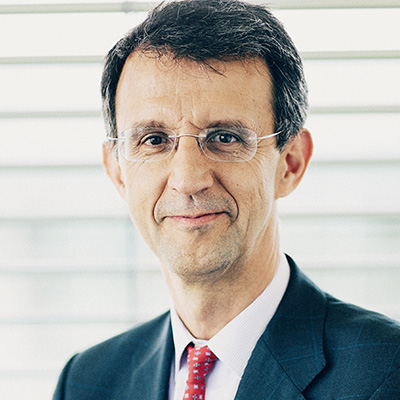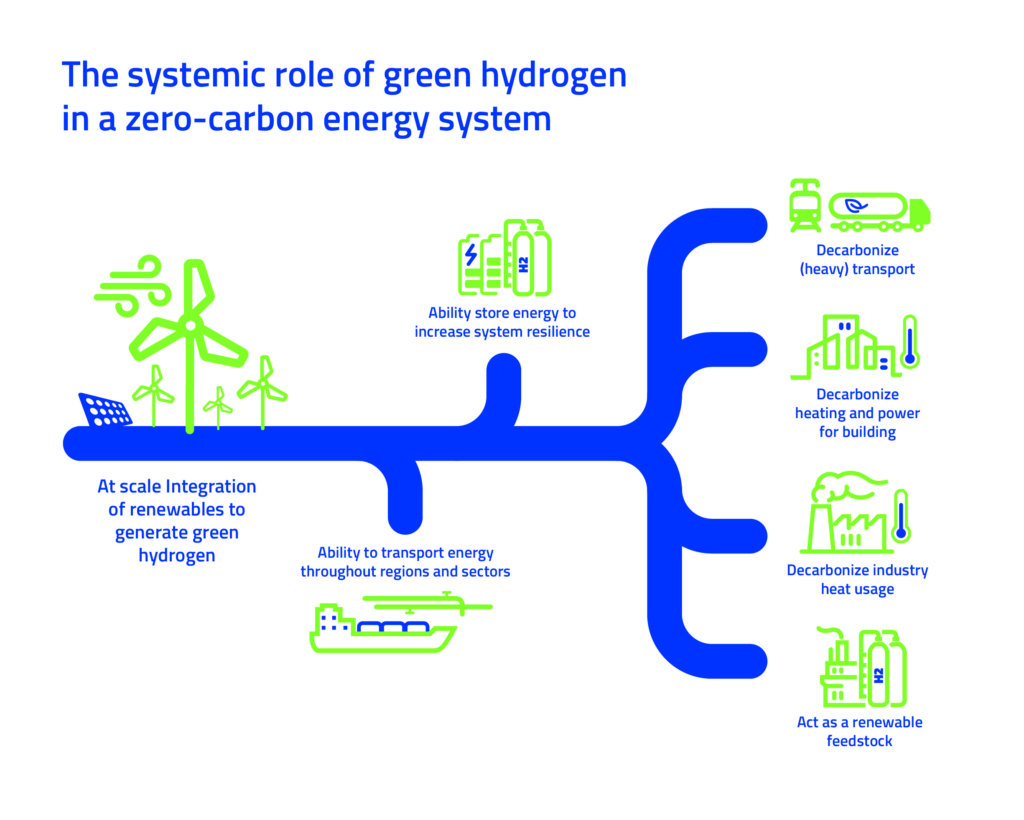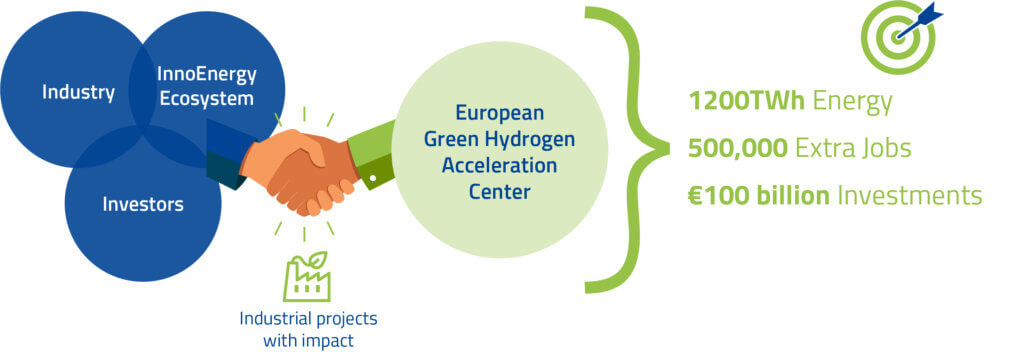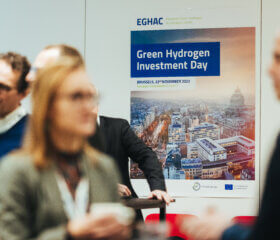
Unlocking the Green Hydrogen Economy through Business Model Innovation

Can business model innovation make a substantial difference for the uptake of the green hydrogen economy? When hydrogen is a promising way to decarbonise an industry, and when partnerships throughout a value-chain result in a CO2-free end-product which incorporates a negligible premium, then the price of the green hydrogen molecule becomes irrelevant for the business case. Fostering investments and accelerating such type of industrial projects is what EIT InnoEnergy aims at with the European Green Hydrogen Acceleration Centre (EGHAC) launched in November 2020, and supported by Breakthrough Energy.
Fostering Investments and Industrial Hydrogen Acceleration Centre
In 2017, the European Commission entrusted EIT InnoEnergy to steer the European Battery Alliance (EBA). With over 500 Industrial actors, research centers and investors across the entire battery value chain, from the ethical sourcing of raw materials to recycling and re-use, EBA supports Europe in becoming a battery industry hotspot. In 2019, investment in Europe across the whole valuechain reached over €60 billion (more than three times as much as in China), aiming to reach an annual market value of €250 billion from 2025 onwards, which represents around 3-4M direct and indirect jobs. This initiative is now a blueprint for the development of industrial value chains in Europe.
EIT InnoEnergy believes in the potential of green hydrogen to decarbonise Europe’s (and the world’s) economy and to achieve the Union’s climate-neutrality ambition. It quickly appeared, however, that the model of EBA could be used as a reference but could not be fully replicated. The hydrogen landscape is today dominated by a debate on the production process of hydrogen (i.e. “green” from renewable electricity, “blue” from fossil fuel combined with carbon capture, “grey” from natural gas, “brown” from coal) and on the price of the molecule, making it difficult for a profitable business case to emerge in the short term.
Therefore, the EGHAC, while capitalising on the lessons learnt from the battery valuechain, treads a new path. It is with this in mind that, in November 2020, EIT InnoEnergy launched the EGHAC that applies a value chain approach and focuses on the cost of the end product (i.e. the steel, the cement, the vegetables grown with fertilizers, the fuels for heavy transport, …) using green hydrogen in evolved innovative industrial processes. EGHAC promises to accelerate the green hydrogen economy and help achieve climate neutrality by targeting 1200TWh of final energy use based on green hydrogen by 2025, which represent investments north of €100 billion across the affected valuechains. This will result in half a million direct and indirect jobs across the green hydrogen value-chain.
As an industry-led initiative, the EGHAC strives to be a key actor in Europe’s green hydrogen ecosystem and works collaboratively alongside existing efforts in this space to achieve Europe’s vision. The industrial projects supported by EGHAC span across a variety of value-chains with energy intensive applications, such as heavy industry (for instance the steel industry, which emitted 203MtCO2e in 2019, making it the largest CO2 emitting industry the European Union, representing about 5% of its overall emissions), heavy transport and feedstock for chemical process and fertilisers. The initiative is supported by Breakthrough Energy, a network of philanthropic programs, investment vehicles, and policy advocacy efforts that offer a comprehensive, end-to-end approach to accelerating the clean energy transition and helping the world reach net-zero emissions by 2050.

Business Model Innovation to Square the Circle of Green Hydrogen Competitiveness
The EGHAC, covering solely green hydrogen, is stepping aside from a hydrogen production cost approach in order to boost the green hydrogen economy at the scale and speed required to achieve climateneutrality. Instead, the EGHAC supports and develops projects which pursue a value-chain approach and offer CO2 free end-products on the market, at a negligible premium price, in key high-emitting economic sectors. In the traditional approach, the multiplication of bilateral agreements along the value-chain, whereby each party needs to optimise its margin in each individual transaction, leads to uncertainties, additional risks, and suboptimal economic outcomes. There, the price of the green hydrogen molecule may be a show-stopper.
A value-chain approach, on the contrary, is about companies partnering in one industrial venture. The profitability of this new venture becomes the main target and the competitiveness of the CO2-free end-product is the dominant factor This business model innovation creates a successful business case, offering a “think outside the box” solution to the decarbonisation of critical sectors, notably steel (e.g. for car manufacturing where steel currently represents 10% of the lifetime CO2 emissions of a car and is expected to reach 30% by 2040, or for windmill towers) or for vegetables using fertilisers.
This business model offers three major benefits: First, it provides an industrial response to the demand by the consumer for sustainable, “made in Europe” products. The demand drives the project rather than the offer of green hydrogen generation capacity. Building on a solid understanding of the customer, and their willingness to pay a small premium for CO2 free products, it allows the consortium to accompany the changes in their customer base. For instance, looking at fertilisers, the demand for greener food and for more transparency in the carbon footprint of food products boosts the case for green fertilisers, and therefore, for green hydrogen. Would any citizen pay a premium of 0,01c€ for a tomato grown with CO2-free fertilizer?
Second, it allows hard-to-decarbonise sectors to start a transition. With this business model, it becomes possible to launch a new green field manufacturing
capacity which acts as a disruptor and leads the transition of a sector towards long-term carbon-neutral sustainability. For Europe’s industrial base and for
its transition to a lowcarbon economy, it is crucial to accelerate the transition of sectors characterised by a strong international competition and reduced
margins. The steel industry is one of those. In this area for instance, EIT InnoEnergy is supporting the effort of industrial players united behind the objective
of manufacturing competitive green steel in Europe. This will demonstrate that scale and an innovative value chain approach delivers competitive CO2-free steel.
Lastly, it is the replicability of the model. The EGHAC fosters the replication of such projects. The experience gained on the first projects will bring speed and scale at many levels: attracting investors and partners, emissions reduction, reshoring an industrial base in key sectors for Europe’s economic transition and resilience. The ambition of the EGHAC is to use that model in all “hard to decarbonate” and “hard to directly electrify” sectors, such as heavy road transport or shipping.
With this initiative, EIT InnoEnergy wishes to continue its efforts in accelerating strategic value chains in order to maximise the industrial benefits of the transition to a climate-neutral economy.
This article has been published earlier in The European Files





